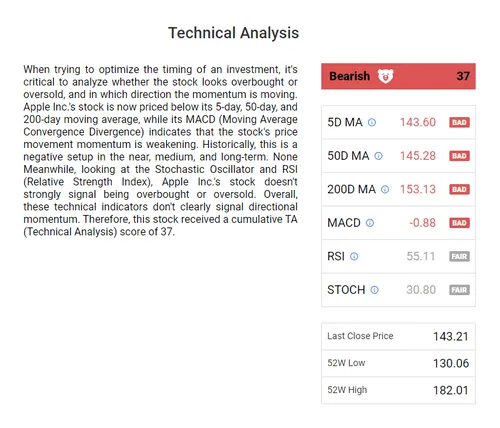20 Free Facts For Deciding On Ai Stock Websites
20 Free Facts For Deciding On Ai Stock Websites
Blog Article
Top 10 Tips To Evaluate The Interface For Users And User Experience Of Ai Analysis And Prediction Of Trading Stocks
The User Interface and the User Experience of AI trading platforms for analysis and prediction of stocks are crucial for ensuring efficiency and usability. They also contribute to general satisfaction. An undesigned interface can affect your decision-making process even when you have strong AI models. Here are 10 suggestions on how to assess the UX/UI.
1. The ease of use and the intuitiveness of the product are evaluated
Navigation: The platform should be simple to use. It should have clear buttons, menus and workflows.
Learning curve: Determine the speed at which an unexperienced user can comprehend and use your platform, with no extensive instruction.
Look for similar designs (e.g. color scheme and button styles) across all platforms.
2. Check for Customizability
Dashboard customization: Check to see if you can alter dashboards to show the relevant information including graphs, metrics, and graphs.
Layout flexibility: Make sure your platform permits you to reorder widgets, charts and tables.
Themes and preferences. Check to see if there are dark/light options or other preferences in the visual.
3. Visualize Data
Quality of chart: Ensure whether the platform offers interactive charts with zooming and panning functionality (e.g. line charts or candlestick charts).
Visual clarity Ensure that all data is displayed in a clear and concise manner, including labels, legends and tips-offs.
Real-time updates: Verify that the visualizations are being updated in real-time to reflect any changes in the market.
4. Test the responsiveness and speed
Even when working with large data sets and complex calculations, the platform must be loaded quickly.
Performance in real-time: Verify that the platform is able to handle data feeds in real time without any lag or delay.
Cross-device compatibility: Make sure that the platform works seamlessly on every device, including desktop, mobile and tablet.
5. Evaluate Accessibility
Mobile App: Make sure the platform offers an application for trading via mobile that is fully functional.
Keyboard shortcuts: Make sure the platform supports keyboard shortcuts to advanced users.
Accessibility features: Make sure that the platform meets accessibility standards (e.g. screen reader support, high-contrast modes).
6. Check out the Search and Filtering Functions and Examine Search
Search efficiency: The platform should let users quickly search stocks, indices and other assets.
Advanced filters: Determine whether users have the ability to apply filters (e.g., by sector, market cap or performance indicators) to narrow down results.
Searches saved to save: Find out if you can save searches or filters which are often used.
7. Check for Alerts and Notifications
Customizable alerts: Make sure that users can configure alerts to specific situations (e.g., prices thresholds, spikes in volume news events, etc.).).
Notification delivery: Verify if alerts are delivered via different channels (e.g. SMS, email, notifications in-app).
Alerts are timely: Ensure that they are promptly and precisely sent.
8. Examine the possibility of integration with other tools
Broker integration - Check that your platform seamlessly integrates with your brokerage in order to allow for quick trade execution.
API access: Find out whether the platform allows API access to advanced users to develop custom tools or workflows.
Third-party platforms: Make sure to determine if your platform is able to integrate with other applications (such as Excel Google Sheets or trading bots).
9. Take a look at the Support and Help Features
Onboarding Tutorials: Find out whether your platform provides tutorials or guides for new users.
Help center: Ensure that the platform is well-equipped with a help center or knowledge base.
Customer service: Examine to find out if the platform has prompt customer service.
10. Test for Overall Satisfaction of Users
User feedback: Research reviews and testimonials to gauge general user satisfaction with the platform's UI/UX.
Trial period - Try out the platform with a no-cost trial and see how it works.
How does the platform deal with edge cases and mistakes?
Bonus Tips
Aesthetics are essential, a beautiful design can help improve user experience.
Testing the performance of the platform under extreme stress to make sure that it is responsive and stable during periods of high volatility.
Visit the forums and community to see if there is an active forum or user group that allows users to discuss tips and provide feedback.
These tips will help you examine the user interface and user experience AI trading platforms that forecast or analyze the prices of stocks. You can be sure that they're efficient, in line to your specific trading needs and user-friendly. The user interface and experience of a trading platform could significantly impact your ability to make educated trades and make the best decisions. Follow the top rated canadian ai stocks for site examples including ai trading bot, ai trading software, chatgpt copyright, ai copyright trading bot, ai stock market, investment ai, ai trading, chatgpt copyright, ai trading tools, trader ai review and more.
Top 10 Tips To Evaluate The Speed And Latency Of Ai Platform For Analyzing And Predicting Trading Stocks
Latency and speed are a critical factor when evaluating AI software for stock prediction or analyzing trading platforms. This is particularly true for high-frequency traders, algorithmic traders and active traders. A delay of just milliseconds can negatively impact profitability and trade execution. Here are 10 top suggestions to determine the speed and latency of these platforms.
1. Real-time Data Feeds for Evaluation
Data delivery speed: Make sure the platform is able to deliver real-time data (e.g. sub-millisecond delay).
Nearness of the data source: To decrease the time it takes to transfer data, make sure whether your platform's servers can be situated near major exchanges.
Data compression: Find out whether your platform uses effective data compression techniques in order to accelerate data delivery.
2. Test the speed of trade execution
Order processing: The platform's capability to complete and process trades swiftly after an order is submitted.
Direct Market Access: Verify that the platform provides DMA. DMA is a feature which allows you to transfer orders directly to exchanges, without intermediaries.
Review the execution reports to determine the timestamps on order confirmation fill, submission and order confirmation.
3. Assess Platform Responsiveness
User interface (UI speed) Test how quickly the platform responds to inputs like clicking buttons, or loading charts.
Chart updates: Verify that visualisations and charts update in real-time, without lag.
Mobile app performance. If you are using a smartphone app that is running, it will perform as quickly as the desktop version.
4. Look for networks with low-latency infrastructure.
Locations of the servers The platform must use low-latency, high-speed servers that are close to major financial hubs or exchanges.
Check for co-location options. These services allow you to host your algorithms near the exchange.
High-speed networks: Determine if the platform is running fiber optic networks with high-speed speeds or low-latency technology.
5. Evaluation of Simulation and Backtesting Speed
Check the speed at which your platform can analyze and process the historical data.
The latency on platforms should be low enough to allow real-time simulations of trades.
Parallel processing: Check that your platform is using distributed computing or parallel processing to accelerate calculations.
6. Evaluation of Latency in API
API response time: This is the speed at the rate at which an API platform responds to requests.
Limits on rates. Examine the API's rate limits in order to avoid delays during high-frequency trading.
WebSocket Check if the platform is compatible with WebSocket protocols that allow streaming of data in real-time with low latency.
7. Test Platform Stability Under Load
High-volume trading to test the platform's flexibility and stability, try simulated high-volume scenarios.
Check your platform out during periods of extreme market volatility.
Check to see what tools are that allow you to test strategies for extreme circumstances.
8. Examine Connectivity and Network
Internet speed demands. Make sure that your connection speed is sufficient to meet the recommended speed of your platform to achieve the best performance.
Redundant connections: Check to find out if there are redundant connections available.
VPN latency: When using the VPN platform, check whether the latency is substantial and if you have alternatives.
9. Check for speed optimization features
Pre-trade analysis The platform must provide pre-trade analyses to optimize the speed of execution and routing of orders.
Smart order routing (SOR) is also referred to as smart order routing, is a method for determining the fastest and the most efficient execution sites.
Utilize the tools of the platform to monitor and analyse latency in real-time.
Review the feedback of users and benchmarks
User reviews: Examine user feedback in order to assess the platform’s speed and latency performance.
Third-party Benchmarks: Search for independent benchmarks that compare the speed of a platform to its competitors.
Case studies: Contact the platform to see if it has any case studies or testimonials that show its capabilities with low latency.
Bonus Tips
Trial period: You can make use of a demo or trial to test out the performance and latency of the platform.
Customer support: Make sure that the platform has assistance for issues related to latency or for optimization.
Hardware requirements. Check if the system is compatible with a specific type of hardware for example, high-performance computers.
The following tips can help you assess the speed of AI trading platforms which predict or analyze the prices of stocks. It will allow you to select a platform for trading that best meets your needs in trading and reduces delays. A low latency is essential for traders who trade high-frequency, or algorithmically where even small delays can affect their performance. See the top rated ai trade info for more tips including ai stocks, best stock analysis website, trade ai, copyright financial advisor, ai investment app, getstocks ai, trading chart ai, ai stock trading bot free, ai stock trading, trade ai and more.